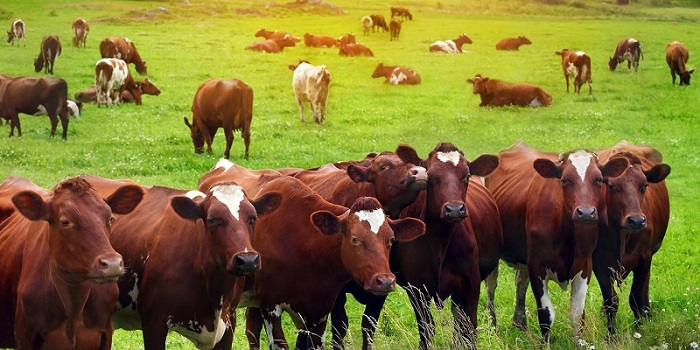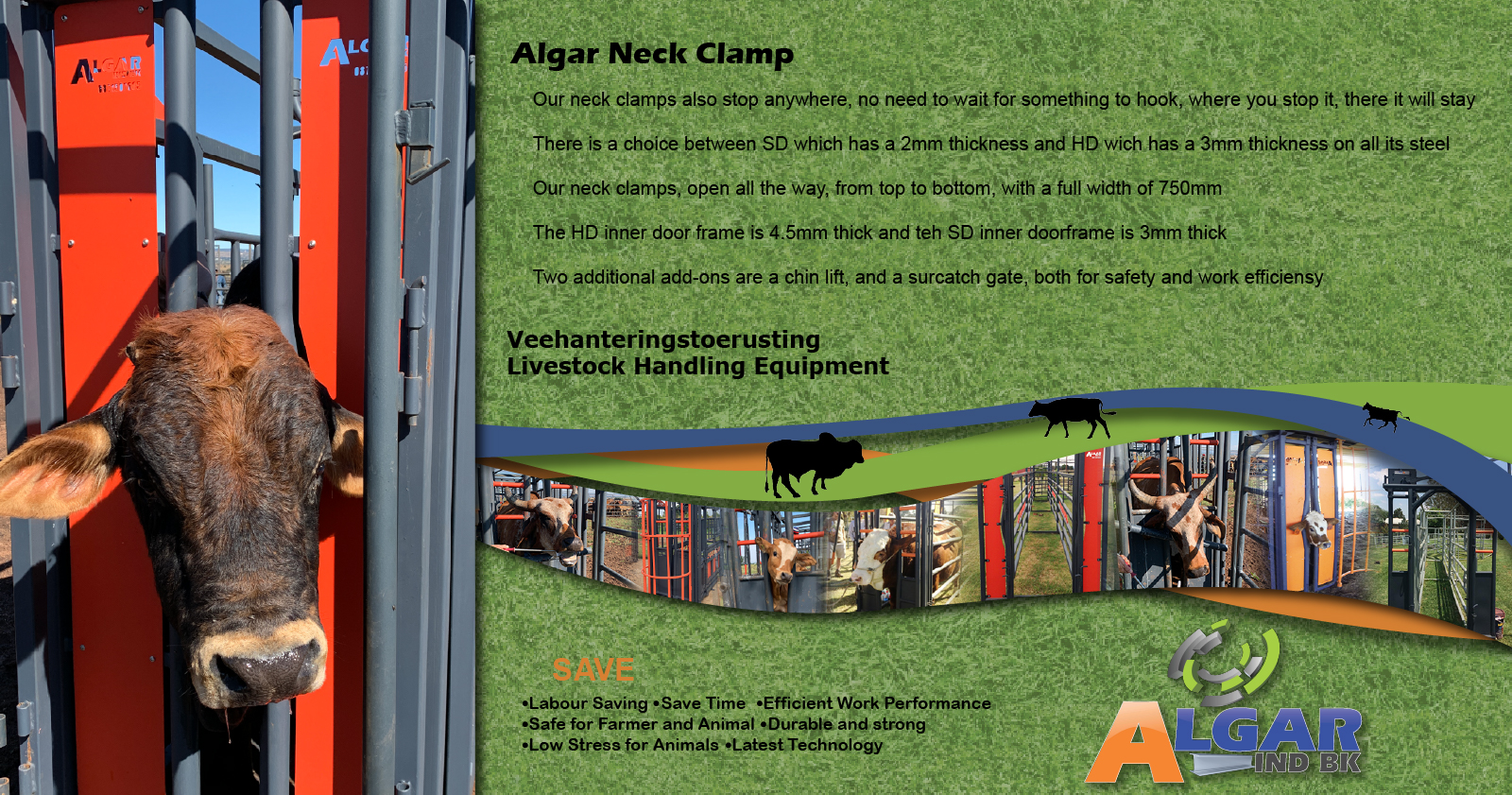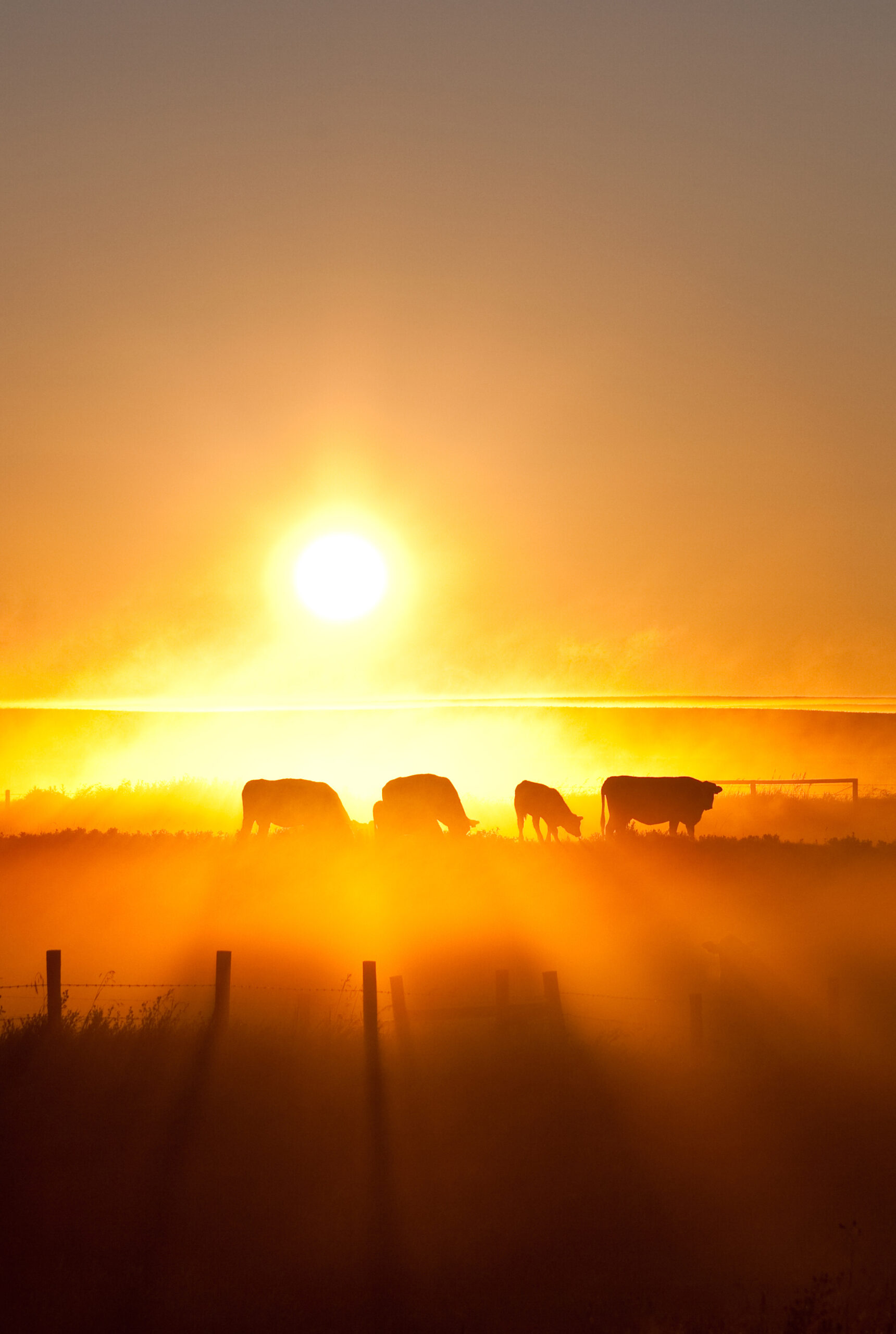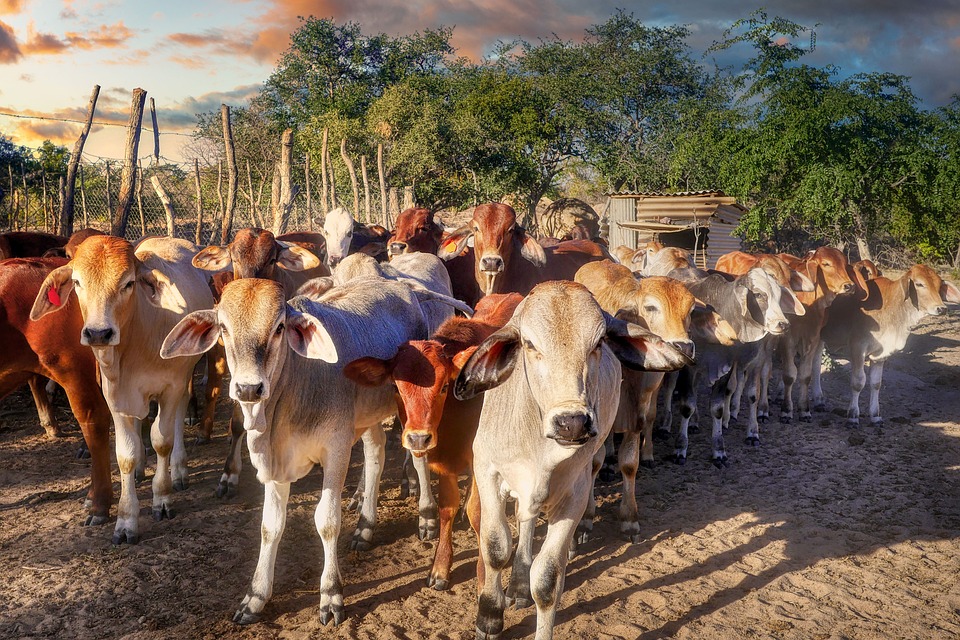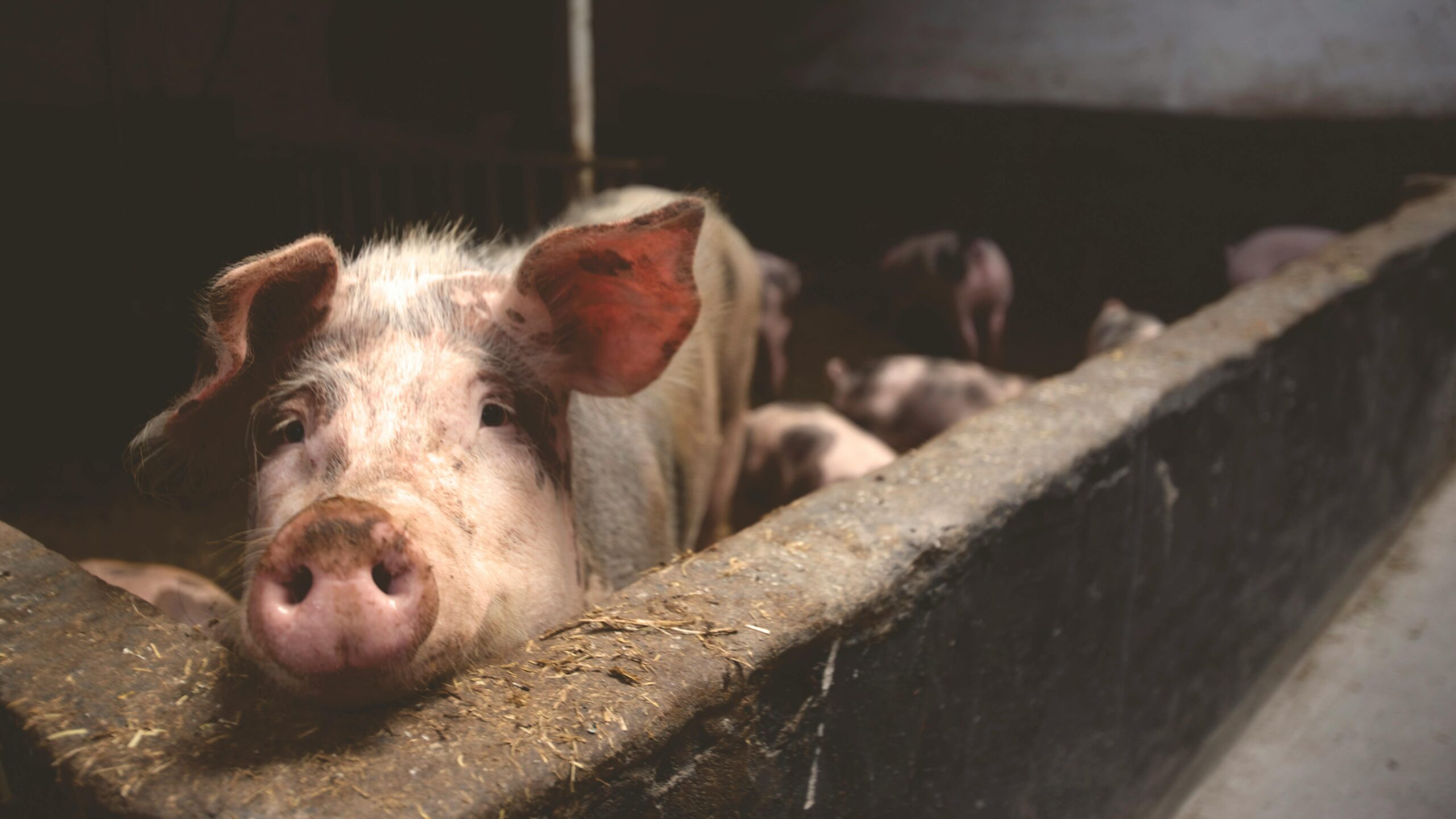Africa can get really hot during summer, and these are the conditions under which various diseases thrive. Livestock farmers must know what summer diseases to look out for, what the symptoms are and how to treat them.
All ill animals should be provided with nutritious feed, plenty of water, a clean pen protected from dampness, and drafts, and isolated from healthy animals. If these measures and your vaccine still does not help, the services of a veterinarian must be called in.
Cattle diseases:
Bloat
Bloat is also called hoven or ruminal tympanites, and is a disorder of ruminant animals involving distention of the rumen. Bloated cattle are very restless and noticeably uncomfortable. Bloat often occurs in cattle that have grazed rich, young crops, or ingested large amounts of concentrate rations.
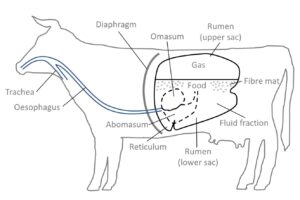
Signs
The first sign of bloat is bulging of the area between the last rib and the hip. As gas pressure increases inside the rumen, the entire abdomen enlarges on both sides of the animal. This causes pressure and pain, resulting in difficult breathing.
Prevention
Bloat can be prevented by avoiding rich feeds such as lush alfalfa, and by feeding sufficient quantities of roughage with concentrates. Forgetting to feed the animal or changing its feed abruptly can also cause bloat.
Treatment
- Depending on the severity of the condition, it may be required to quickly relieve the gas pressure.
- Treatment means to slow down fermentation in the rumen and help relieve the excess gas pressure.
- Veterinarians have their own treatment methods that differ from animal to animal.
- For emergency treatment, cooking oil may be administered via the mouth.
- Another emergency treatment is passing a stomach tube or piece of garden hose into the rumen to release the gas, but this should be done by someone with experience.
- A veterinarian or an experienced farmer may also insert a surgical instrument, called a trochar, into the rumen through the exact place high up in the side of the animal to immediately relieve the pressure.
Pinkeye
Usually, animals have a lot of flies around them in summer. Pinkeye is an eye infection that happens when flies deposit the bacterium in the eyes. In most severe cases, it can permanently blind an animal in one or both eyes. Pinkeye can also spread from animals to humans.
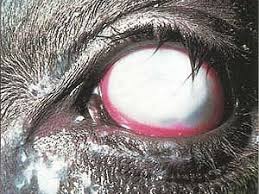
Example of what pink eye in cattle looks like
Signs
Affected eyes are sensitive to bright light. The first thing a farmer will see is a clear discharge running from the affected eye down the side of the face. The eye appears red and may bulge. A white spot will appear and may remain if the eye does not heal properly. Calves will generally exhibit a more frightened behaviour, as they may have more difficulty to see their surroundings.
Prevention
- Separate infected calves from healthy calves.
- Control flies by spraying, dipping, or dusting calves and spraying calf pens.
- Dispose of manure frequently to eliminate places for flies to lay eggs.
- To avoid getting pinkeye yourself, wash your hands frequently and avoid touching your eyes.
Treatment
- Keep affected calves in a cool, darkened pen and give them plenty of feed and water.
- Apply antibiotic ointments on the affected eyes under the direction of a veterinarian.
- Severe cases may require additional veterinary treatment.
Warts
Warts are viral infections of the skin and can spread among animals.
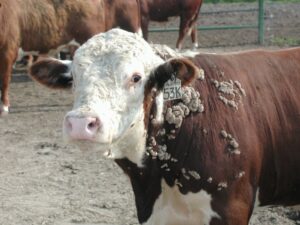
Cattle warts
Signs
Warts commonly appear and spread slowly on the neck, shoulders, and head. Most warts are small, but in extreme cases, they become so large that they break off and can easily become infected.
Prevention
Isolating affected calves will help prevent the disease from spreading to others.
Treatment
Small warts often disappear without treatment, but larger warts will need to be removed and healed. Ask your veterinarian for the best treatment.
Theileriosis
Theileriosis is a disease caused by a species of Theileria – a blood-borne parasite, or also called January disease. It only affects cattle and is primarily transmitted by ticks. To become infected by Theileria, a cow must be bitten by a tick carrying the disease. Once the animal is bitten, it takes about 6 to 8 weeks for the parasite to build up to significant levels in the blood.
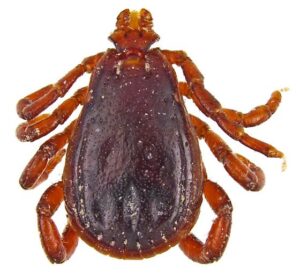
Signs
- Pale or yellow, rather than healthy pink, vulva (open up the vulva to look at the colouring).
- Pale or yellow whites of eyes (a sign of jaundice).
- Lethargy – exercise intolerance, cows lagging behind on the walk to the shed.
- Sick cows not responding as expected to treatment for conditions such as milk fever.
- Cows are off their food and appear hollow sided.
- A decrease in milk production.
- Sudden death, especially in late pregnancy or early lactation.
Prevention
This disease can be prevented if you spray and control the ticks around the cattle.
Treatment
Immediately reducing pressure on the affected animal by:
- Milking once a day.
- Minimised handling.
- When bringing into the shed, let them go at their own pace (do not push them).
- Good quality feed.
- Medical intervention.
- Treatment of concurrent illnesses (for example ketosis or black mastitis).
- Supplementation of trace minerals and iron (hemo15 multi-mineral injection).
- Blood transfusions.
- Buparvaquone (Butalex).
Sheep diseases:
Blue tongue
Blue tongue is an insect-borne, viral disease affecting sheep, cattle, and goats. Although sheep are most severely affected, cattle are the main mammalian reservoir of the virus and are very important in the epidemiology of the disease.
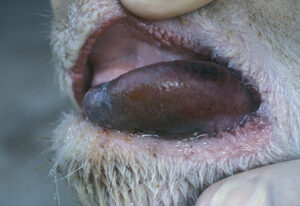
A sheep with blue tounge
Signs
- High rectal temperature (up to 42,0° C).
- There is swelling of the face and ears, and also pulmonary oedema which may cause breathing difficulties.
- Animals are stiff and reluctant to move.
- Eye and nasal discharges.
- Drooling as a result of ulcerations in the mouth.
- Swelling of the mouth, head, and neck.
- Lameness with inflammation at the junction of the skin and the coronary band.
- Difficult breathing.
- Abortion.
Prevention
The main prevention is vaccination. The vaccines also do not act immediately, with cattle requiring two doses of vaccine (the second at least 6 weeks after the first) to be protected.
Treatment
Treatment is limited to antibiotic therapy to control secondary bacterial infections.
Sources:
https://www.canr.msu.edu/news/three_common_summer_cattle_diseases
https://www.thepatriot.co.zw/old_posts/cattle-diseases-in-zimbabwe-part-one/
https://www.sundaymail.co.zw/january-disease-kills-50-000-cattle
https://www.nadis.org.uk/disease-a-z/cattle/bluetongue-in-cattle-and-sheep/
https://franklinvets.co.nz/dairy/disease-management/theleiria/

